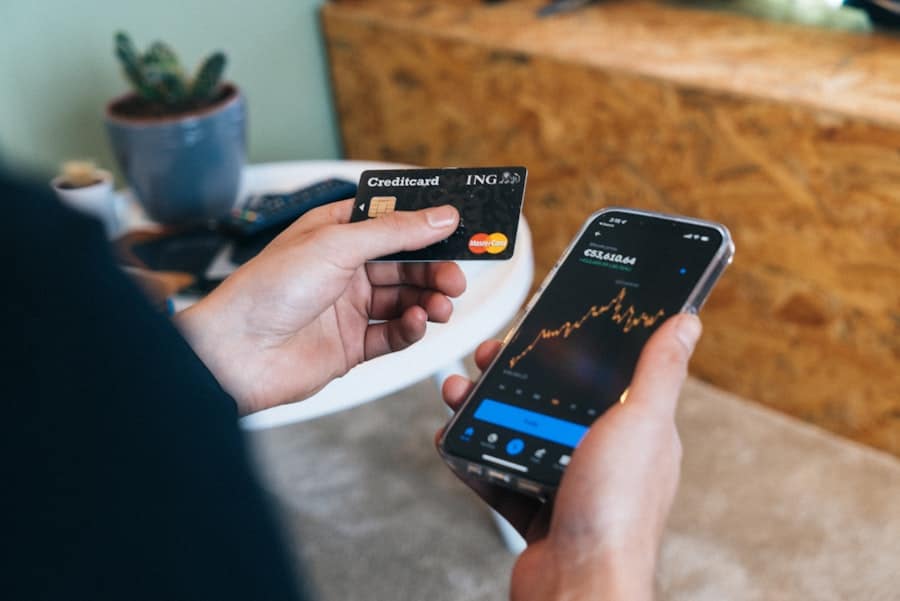The advent of mobile wallets has revolutionized the way consumers engage in financial transactions. Initially, the concept of carrying cash or cards was the norm, but with the rapid advancement of technology, mobile wallets have emerged as a convenient alternative. These digital wallets allow users to store their payment information securely on their smartphones, enabling them to make purchases with just a few taps.
The rise of mobile wallets can be attributed to several factors, including the proliferation of smartphones, increased internet connectivity, and a growing consumer preference for convenience and speed in transactions. Mobile wallets such as Apple Pay, Google Pay, and Samsung Pay have gained significant traction in recent years. According to a report by Statista, the number of mobile wallet users worldwide is expected to reach 1.31 billion by 2023.
This surge in adoption is not merely a trend; it reflects a fundamental shift in consumer behavior. People are increasingly seeking seamless payment experiences that eliminate the need for physical cash or cards. The COVID-19 pandemic further accelerated this trend, as health concerns prompted many to seek contactless payment options to minimize physical interactions.
As a result, businesses have adapted by integrating mobile wallet capabilities into their payment systems, making it easier for consumers to transact without the need for traditional payment methods.
Key Takeaways
- Mobile wallets are becoming increasingly popular for making payments and managing finances on the go.
- NFC technology enables contactless payments, making transactions faster and more convenient for consumers.
- Security and privacy concerns are important considerations for users of mobile wallets and contactless payment systems.
- Traditional banking institutions are facing challenges as mobile wallets and contactless payments gain traction.
- Big tech companies are playing a significant role in shaping the future of mobile wallets and contactless payment systems.
NFC Technology and Contactless Payments
How NFC Technology Works
When a user taps their smartphone against an NFC-enabled terminal, the device transmits payment information securely, allowing for instantaneous processing of the transaction. The convenience of NFC technology cannot be overstated. It eliminates the need for physical contact between devices, which is particularly appealing in today’s health-conscious environment.
The Rise of Contactless Payments
For instance, during the pandemic, many consumers opted for contactless payments to reduce the risk of virus transmission associated with handling cash or touching payment terminals. Retailers have responded by upgrading their point-of-sale systems to support NFC transactions, further embedding this technology into everyday commerce.
Increased Adoption Across Sectors
The ease of use and speed of contactless payments have made them increasingly popular among consumers, leading to a significant uptick in their adoption across various sectors, from retail to transportation.
Security and Privacy Concerns
Despite the numerous advantages of mobile wallets and contactless payments, security and privacy concerns remain at the forefront of consumer apprehensions. The digital nature of these transactions raises questions about data protection and the potential for fraud. Mobile wallets typically employ encryption and tokenization to safeguard sensitive information, but breaches can still occur.
High-profile data breaches involving major retailers and financial institutions have heightened awareness around the vulnerabilities associated with digital payments. Moreover, privacy concerns are exacerbated by the extensive data collection practices employed by many mobile wallet providers. Users often unknowingly consent to share their transaction history and personal information with third parties for targeted advertising or analytics purposes.
This has led to calls for greater transparency and stricter regulations governing data usage in the financial technology sector. Consumers are becoming increasingly aware of their digital footprints and are demanding more control over their personal information. As mobile wallets continue to gain popularity, addressing these security and privacy concerns will be crucial in building trust among users.
The Impact on Traditional Banking
The rise of mobile wallets and contactless payments has had a profound impact on traditional banking institutions. As consumers gravitate towards digital payment solutions, banks are compelled to adapt their services to remain competitive. Many banks have begun to integrate mobile wallet functionalities into their existing offerings, allowing customers to link their bank accounts directly to digital wallets for seamless transactions.
This shift not only enhances customer convenience but also helps banks retain their relevance in an increasingly digital landscape. Furthermore, the emergence of fintech companies has disrupted traditional banking models by offering innovative payment solutions that challenge conventional practices. These companies often provide faster, more user-friendly services that appeal to tech-savvy consumers who prioritize convenience over traditional banking experiences.
As a result, banks are investing heavily in technology and digital transformation initiatives to enhance their service offerings and improve customer engagement. The competition from fintech firms has prompted traditional banks to rethink their strategies, leading to collaborations and partnerships that aim to leverage technology for better customer experiences.
The Role of Big Tech Companies
Big tech companies have played a pivotal role in shaping the landscape of mobile payments and digital wallets. Companies like Apple, Google, and Amazon have leveraged their vast user bases and technological expertise to introduce payment solutions that resonate with consumers. Apple Pay, for instance, has become synonymous with mobile payments due to its seamless integration with Apple devices and its emphasis on user privacy and security.
The influence of big tech companies extends beyond just providing payment platforms; they are also driving innovation in the financial technology space. By investing in research and development, these companies are exploring new technologies such as blockchain and artificial intelligence to enhance payment security and streamline transaction processes.
Their entry into the financial sector has prompted traditional banks to rethink their approaches and adopt more agile practices to keep pace with technological advancements. As big tech continues to expand its footprint in finance, it raises questions about regulation and competition in an industry that is rapidly evolving.
The Growth of Peer-to-Peer Payment Apps
Peer-to-peer (P2P) payment apps have emerged as a significant player in the mobile payments ecosystem, allowing individuals to send money directly to one another with ease. Applications like Venmo, Cash App, and Zelle have gained immense popularity by simplifying the process of transferring funds between friends and family members. These platforms often feature social elements that allow users to share payment activities or add notes about transactions, making them more engaging and user-friendly.
The growth of P2P payment apps can be attributed to several factors, including the increasing prevalence of smartphones and the desire for quick and convenient money transfers. For instance, Venmo’s social feed allows users to see what their friends are paying for, creating a sense of community around financial transactions. This social aspect has contributed significantly to its popularity among younger demographics who value both convenience and social interaction in their financial dealings.
As these apps continue to evolve, they are likely to incorporate additional features such as budgeting tools or investment options, further enhancing their appeal.
The Integration of Contactless Payments in Everyday Life
Contactless payments have seamlessly integrated into various aspects of everyday life, transforming how consumers interact with businesses and manage their finances. From grocery stores to public transportation systems, contactless payment options are becoming ubiquitous. For example, many cities have adopted contactless fare systems that allow commuters to tap their smartphones or contactless cards at turnstiles or ticket machines, streamlining the boarding process and reducing wait times.
Retailers have also embraced contactless payments as a means of enhancing customer experience. Fast-food chains like McDonald’s and Starbucks have implemented mobile ordering systems that allow customers to place orders through apps and pay using contactless methods upon arrival. This not only expedites service but also caters to consumers’ growing preference for convenience and efficiency in their shopping experiences.
As contactless payments become more ingrained in daily routines, they are reshaping consumer expectations around speed and ease of transactions.
The Future of Contactless Payment Systems
Looking ahead, the future of contactless payment systems appears promising as technology continues to evolve and consumer preferences shift towards digital solutions. Innovations such as biometric authentication—using fingerprints or facial recognition—are likely to enhance security measures while maintaining user convenience. These advancements could further alleviate concerns surrounding fraud and data breaches that have plagued digital payment systems.
For instance, industries such as healthcare may begin implementing contactless payments for services rendered at hospitals or clinics, allowing patients to settle bills quickly without physical interaction. Additionally, advancements in blockchain technology could pave the way for decentralized payment systems that offer enhanced security and transparency.
As we move forward into an increasingly digital future, the integration of contactless payments into various sectors will likely continue to grow. The convergence of technology and consumer behavior will shape how we conduct transactions, making it essential for businesses and financial institutions to stay ahead of trends while addressing security concerns effectively. The evolution of contactless payment systems is not just about convenience; it represents a fundamental shift in how we perceive money and engage with our financial lives.
In a recent article from enicomp.com, the concept of conversational commerce is explored in depth. This emerging trend in e-commerce involves using messaging apps, chatbots, and other forms of communication to facilitate transactions between businesses and customers. As smartphones continue to play a crucial role in shaping the way we shop and pay for goods and services, conversational commerce is becoming increasingly important in the digital marketplace. The article delves into how this innovative approach is revolutionizing the way we interact with businesses and make purchases online.
FAQs
What are contactless payment systems?
Contactless payment systems are a method of transaction that allows customers to make payments by simply tapping their contactless-enabled card or smartphone on a compatible payment terminal, without the need to physically swipe or insert the card.
How are smartphones transforming contactless payment systems?
Smartphones are transforming contactless payment systems by allowing users to store their payment information in digital wallets and make contactless payments using near field communication (NFC) technology. This eliminates the need to carry physical cards and provides a more convenient and secure payment method.
What are the benefits of using smartphones for contactless payments?
Using smartphones for contactless payments offers benefits such as convenience, security, and accessibility. It allows users to make quick and easy payments without the need for physical cards, provides added security features such as biometric authentication, and can be used with various payment apps and digital wallets.
Are there any security concerns with using smartphones for contactless payments?
While using smartphones for contactless payments offers security features such as biometric authentication and tokenization, there are still potential security concerns such as unauthorized access to the device or digital wallet, and the risk of data breaches. It is important for users to take necessary precautions such as using strong authentication methods and keeping their devices secure.
How are businesses adapting to the use of smartphones for contactless payments?
Businesses are adapting to the use of smartphones for contactless payments by implementing compatible payment terminals, accepting various digital wallets and payment apps, and providing a seamless and convenient payment experience for their customers. This includes offering incentives for using contactless payments and ensuring the security of their payment systems.



